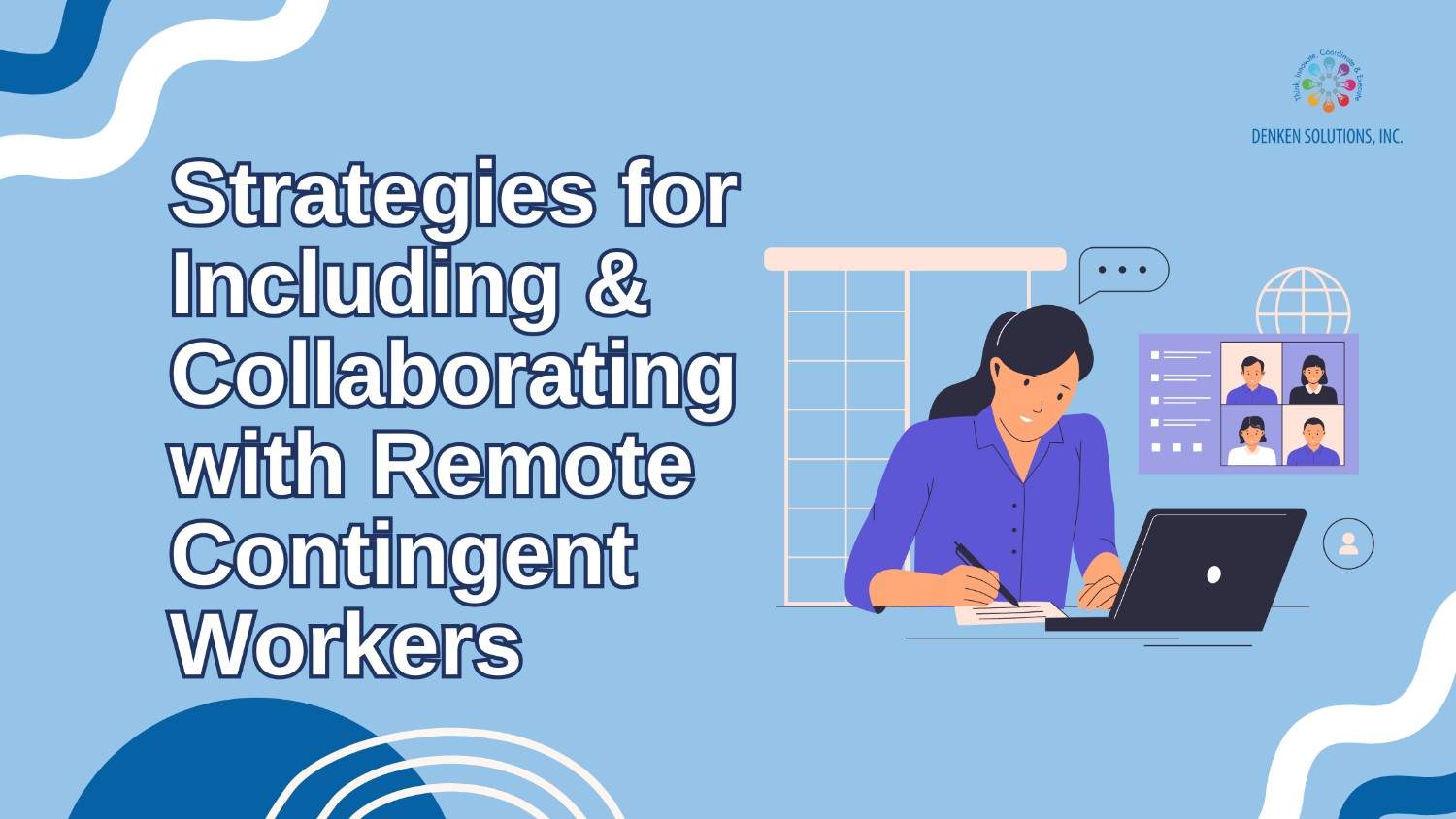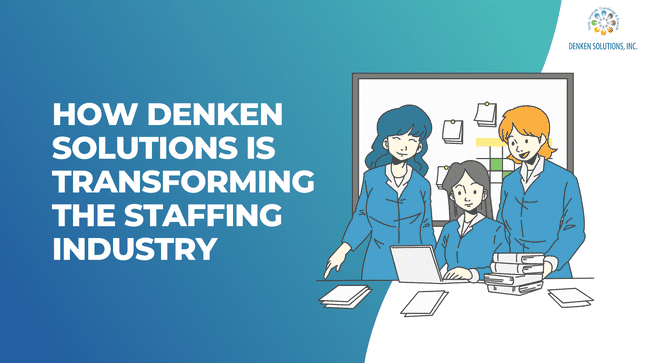Businesses are increasingly shifting towards flexible workforce models, remote contingent workers, and remote work, which includes freelancers, contractors, and temporary staff. These workers will bring a wealth of fresh perspectives, specialized skills, and the flexibility that businesses require to adapt in the current fast-paced environment. However, managing and integrating these remote contingent workers will present its own set of challenges.
Even while these employees frequently contribute to project-based work or certain specialties, they can feel cut off from the main team, which could result in a lack of engagement, communication, and collaboration. To realize their full potential and make sure they feel like an important part of the company’s culture, inclusion, and teamwork are essential.
In this blog, we will cover the effective methods for remote gig worker integration, thus creating an inclusive workplace and encouraging smooth teamwork within the company. Regardless of where their employees are situated, companies may increase productivity and create a cohesive team by putting these methods into practice.
What is the importance of inclusion for remote contingent workers?
As businesses are relying on remote contingent workers, cultivating an inclusive environment is becoming important to ensure success and maximize their contributions. Remote contingent workers will usually work from diverse locations, time zones, and backgrounds, thus making it easy for them to feel disconnected from the core team. This sense of isolation can affect their productivity and engagement, which will affect the quality of the work and the company’s overall success. This is why following remote work best practices is important for remote contingent workers:
1. Enhanced employee motivation and engagement:
When remote contingent workers feel included, they are more likely to be engaged with the work. Inclusion will create a sense of belonging, which will boost the motivation to contribute their best efforts. Feeling valued and recognized for the work can help in maintaining their commitment and enthusiasm, even if they are not physically present in the office. Engaged remote workers will tend to be more innovative, productive, and loyal, thus improving both the performance and the overall output of the team.
2. Improved communication and collaboration:
Inclusion will encourage better communication and collaboration between remote contingent workers and in-house teams. When workers are integrated into team meetings, project discussions, and brainstorming sessions, they gain a detailed understanding of the processes, business goals, and team dynamics. This shared knowledge will foster better cooperation, virtual team collaboration, smooth project handovers, and higher-quality deliverables. It will also help in mitigating the risk of misunderstandings, which can occur when workers feel like outsiders.
3. Retention and attraction of top talent:
Remote contingent workers usually have multiple opportunities to pick from. Inclusive work environments are way more attractive to high-quality talent as they seek work that will align with their values. Remote workers are more inclined to stick with a firm if they are assured of fair treatment, equal opportunity for professional growth, and recognition for their achievements. This lowers employee turnover as well as the expenses related to hiring and onboarding new employees.
4. Innovation and diversity:
Diverse viewpoints are fostered by inclusion, and this is crucial for innovation. Including remote contingent workers in the decision-making process fosters creativity and problem-solving skills, as they provide new ideas and solutions, often from diverse professional or cultural backgrounds. Companies that support inclusion take advantage of these varied perspectives to spur innovation, maintain a competitive edge, and enhance their goods and services.
5. Company’s positive culture:
Even in remote environments, a company that prioritizes inclusivity fosters a positive workplace atmosphere. Whether full-time or contract, inclusion fosters a culture of trust, respect, and cooperation where all employees feel they are working toward the same objectives. Employee satisfaction is thus increased, and a favorable reputation as an employer of choice is developed. Better cooperation and job satisfaction are the results of improved internal relationships brought about by a coherent corporate culture.
6. Increased productivity and accountability:
Remote contingent workers are more likely to accept responsibility for their work and hold themselves accountable for outcomes when they feel valued and a part of the team. They will have a stake in the group’s and the company’s overall success. Better work, faster turnaround times, and increased productivity all around can come from this. Employees are more inclined to go above and beyond in their work when they believe their contributions are valued, which is advantageous to the business as a whole.
What are the common challenges in managing remote contingent workers?
Managing remote contingent workers can be very rewarding; however, it can also accompany a certain set of challenges. Understanding these obstacles is the primary step towards creating an inclusive, productive, and collaborative remote workforce. Here are some of the most common challenges that businesses face:
1. Communication gaps across time zones:
Remote contingent workers usually operate from multiple regions across the globe. Coordinating with the team for meetings, updates, and feedback can sometimes become difficult because of differences in time zones. Misaligned communication can cause misunderstandings, delays, ineffective virtual team collaborations, and reduced productivity if not addressed properly.
2. Reduced sense of belonging:
Contingent workers can feel quite disconnected from the core team as they tend to miss out on informal interactions, team culture, and company-related updates. Lack of engagement can reduce motivation, affect collaboration, and affect the overall work quality.
3. Tough to track performance:
Unlike the full-time employees, contingent workers might have more flexible schedules and work remotely. This can make it challenging to track progress, monitor deliverables, and ensure that tasks align with business goals. Without the appropriate tools and processes, managing performance can become highly inconsistent.
4. Payroll and compliance challenges:
Hiring a remote contingent worker across multiple countries will involve navigating a maze of labor laws, tax regulations, and payroll requirements. Missteps in classification, payment, or statutory compliance can result in legal issues, penalties, and damaged reputation.
5. Technological barriers:
Contingent workers can face issues accessing company systems, collaboration tools, or secure platforms. Differences in technology infrastructure, software familiarity, or connectivity can slow down work and reduce efficiency.
Strategies to effectively include contingent workers in your team:
The process of remote gig worker integration into the team is not just about assigning tasks; it is also about creating an environment where they can feel connected, empowered, and valued to contribute. Some of the proven strategies to ensure inclusion and collaboration include:
1. Clear orientation and onboarding:
Even if contingent workers are short-term, a structured onboarding process will help them understand company workflows, values, and expectations. Share the key documents, contacts, and tools so that you can start contributing confidently and quickly.
2. Regular check-ins and communications:
Maintain consistent communication via video calls, project management tools, and chat platforms. Schedule regular check-ins to provide feedback, foster engagement, and clarify tasks across various time zones.
3. Access to collaboration tools:
Equip contingent workers with the same technology and collaboration platforms as full-time employees. This will ensure that they can participate in team discussions, contribute to projects, and access necessary resources without friction.
4. Inclusion and recognition in team culture:
Acknowledge contributions publicly and encourage participation in team events, virtual coffee breaks, or brainstorming sessions. Recognition fosters a sense of belonging and motivates workers to stay engaged.
5. Set clear roles, expectations, and responsibilities:
Define the scope of work, deliverables, and timelines clearly and beforehand. Clarity will reduce confusion, prevent misalignment, and help contingent workers understand how the roles fit into the bigger picture.
How does Denken Solutions support inclusion and collaboration for remote contingent workers?
Managing a remote contingent workforce presents a unique set of challenges, encompassing everything from engagement to compliance. Denken Solutions contributes significantly to assisting businesses in navigating these complexities, thus ensuring seamless inclusion and collaboration:
1. Streamlined onboarding:
Denken Solutions ensures that remote contingent workers are onboarded efficiently and quickly with clear guidelines, role definitions, and access to necessary tools, thus making them feel part of the team from day one.
2. Channels of centralized communication:
Denken Solutions helps companies create efficient channels for communication and collaboration through integrated platforms, which lessen isolation and increase connectedness amongst geographically dispersed personnel.
3. Payroll management and compliance:
Denken Solutions enables businesses to concentrate on engagement and productivity rather than administrative challenges by managing payroll, benefits, and statutory compliance across several geographies.
4. Availability of skilled talent:
Regardless of their location, Denken Solutions assists businesses in hiring top-tier contingent workers who can fit in with the company culture and work well together.
5. Assistance for employee engagement:
The platform provides tactics for maintaining contingent workers’ motivation, acknowledgment, and participation in team activities, which promotes a feeling of community and improves cooperation in general.
Contact us today to learn how we can help you build a stronger, more collaborative workforce.
Conclusion:
Managing remote contingent workers will require more than just assigning tasks. It will demand thoughtful strategies for communication, collaboration, and inclusion. By fostering effective communication channels, clear onboarding processes, and recognising the contributions of contingent workers, businesses can create a cohesive and productive remote workforce. Leveraging solutions like Denken Solutions will ensure compliance and smooth payroll management, along with helping organizations to build an engaged, motivated, and collaborative global team, thus turning challenges of remote contingent work into a strategic advantage.



